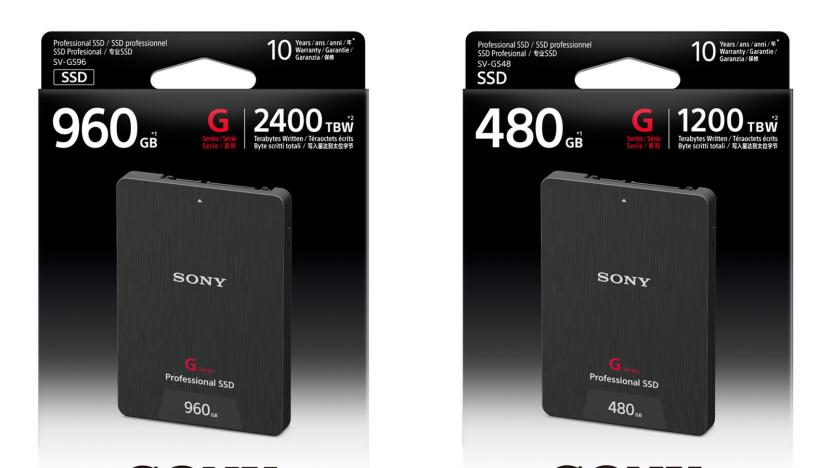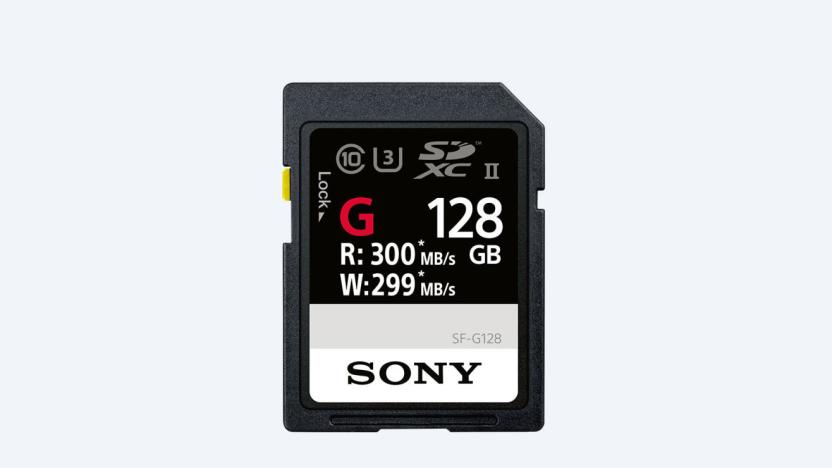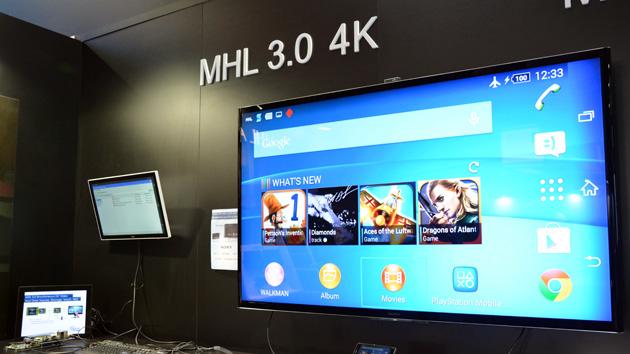4kvideo
Latest

A closer look at DJI's Osmo Pocket camera
DJI has become known for offering some of the best gimbal setups for video creators, and its latest product is quite promising. The new Osmo Pocket, which leaked earlier today, is a 12-megapixel camera that can shoot 4K video at up to 60 frames per second. And, as its name suggests, one of its main traits is that it's small enough to fit in your pocket -- so long as your jeans aren't too skinny. It weighs a mere 119 grams (or about four ounces), has 3-axis mechanical stabilization and a 140-minute battery life (at 4K 30p).

DJI’s stabilized Osmo Pocket camera costs $349
DJI has unveiled its Osmo Pocket camera -- a tiny three-axis stabilized camera that can shoot 12-megapixel photographs and 4K video at up to 60fps. The company announced its new camera at a "Because Life is Big" event today in New York, though some specs were leaked just ahead of the reveal. "Innovation is at the heart of every product we create and DJI Osmo Pocket is here to change the way photos and videos are captured, not just by professionals but by parents, couples, adventurers, travelers and everyone in between," DJI President Roger Luo said in a statement. "Osmo Pocket is a portable personal camera crew and we can't wait to see how people use it to capture their stories and share them with the world."

Sony's SSDs can withstand the torture of capturing 4K
Aspiring 4K filmmakers who want the best quality can buy pro-level RAW video cameras on the cheap, or use a DSLR with an external 4K recorder like the Atomos Ninja 2. However, the SSDs on such devices often record and dump out high bit-rate 4K video multiple times a week, so they need to be much faster and more durable than the one on your laptop. That's where Sony comes in with its latest G Series Professional SSDs, which can write up to 2,400 terabytes without failing and use tech that prevents disastrous frame dropping.

Sony's 'world's fastest' SD card writes data at 299 MB/s
Sony's upcoming SF-G series of SD cards will be available this spring, the company announced today. When that time comes, Sony said they "will be the world's fastest SD cards." Boasting a maximum write speed of 299 MB/s, that claim is right on point.

Google's Pixel phones arrive with full-res photo and video storage
In addition to unveiling its new Pixel phones at its big keynote today, Google revealed that its new handsets will come with unlimited cloud storage for full-resolution pictures and videos. That's a big deal if you plan to take advantage of the devices' 4K shooting capabilities and shoot stills at full 12.3-megapixel resolution. It's worth noting that the company already offers something similar with Google Photos, but the current arrangement still doesn't necessarily guarantee images will be saved at their fullest resolution.

Sony's super-thin 4K TV arrives this summer
A year after Sony's 4K TV launch, the company is detailing the US launch of a revamped collection with HDR-compatible sets. You can now pre-order six models in Sony's new Ultra HD lineup, with deliveries arriving in May. The line starts off with a 43-inch TV that costs $1,300, and goes up to a 75-inch behemoth at $8,000. Sony isn't talking about pricing for the X900C, reportedly the thinnest LED TV in the world, but it's poised to arrive this summer. It could be worth the wait -- at 5.08mm, it's thinner than your smartphone (unless you're using Oppo's 4.8mm R5). It also has a "Vanishing Edge" technology that makes the picture fill the entire screen.

A new MHL adapter charges your phone while sending 4K video to a TV
Back in March, we took a look at the MHL 3.0 tech that wrangles 4K video from a micro-USB jack while keeping the device charged. Well, now there's a handy adapter for linking those compatible gadgets with any TV that packs HDMI ports for viewing sessions. If you're in need of a refresher, the MHL 3.0 standard sorts 4K video output from a micro-USB port while also keeping said smartphone (like Sony's Xperia Z3, for example) or slate charged with up to 10W of power. The adapter also takes care of 7.1 Dolby TrueHD and DTS-HD 7.1 surround sound to match the visuals. If you happen to be wielding a MHL-compatible device, JCE's handy accessory is set to arrive before the month's end with a $30 price tag.

Samsung Galaxy Note III camera rumored to pack 4K video capture, high-quality audio playback
What are you going to add to a smartphone series that's already gone big-screen, already has a stylus and already offers up a decent battery life? According to the Korea Economic Daily, Samsung believes adding a heavy-duty camera upgrade to 4K should do the trick. The news site's source (identified as an "industry official" rather than a Samsung employee), says the Galaxy Note III, which is likely to make its debut at IFA 2013, will be able to record video in Ultra High Definition. It's a significant pixel boost from the 1080p video capture available to last year's Galaxy Note II. The company is likely hoping that offering up an opportunity to record in 4K will mean those smartphone owners are then more likely to upgrade their TV sets (to a Ultra HD Samsung model, naturally) to make the most of their crisp video content. Alongside a new camera, the same source reckons that audio quality will be bumped up to 24-bit, like LG's G2 and a step above the 16-bit audio tech in Samsung's existing Galaxy phones. No word on the previous notion of three differently-sized models and as the source material has gone through the Google Translate grinder, things aren't as clear as we'd have hoped. However, the Korea Economic Daily has past form when it comes to Samsung news. Next week, we're sure to hear all the finer details and we're taking bets on which company will be the first to claim "world's first".

GoPro Hero3 action camera hands-on
GoPro just revealed its new flagship action camcorder, the Hero3, and we managed to get our mitts on one this evening. First things first, the Hero3 is tiny, particularly when considering that it shoots 4K video (albeit at a paltry 12fps), a resolution usually reserved for much larger, cinematic cameras. Having handled its competition recently -- the Action Cam from Sony and the Contour+2 -- we can say that the Hero3 feels smaller and lighter than both of them. It's about the size of a couple of matchboxes stacked together and is quite lightweight, yet still feels sturdy. The textured plastic exterior is finger friendly, and the big round power / mode and record buttons give a reassuring snick with every press. The WiFi remote that comes with the Hero3 Black Edition is similarly solid in its construction, though we wish it had the same textured skin as the camera instead of its smooth exterior. We didn't get to use the Hero3 for its stated purpose just yet, but we'll be filming with the thing tomorrow, so stay tuned for all the POV footage. In the meantime, feel free to enjoy a tour of GoPro's new diminutive hardware and check out its first sample video after the break.

Sony Stitch merges footage from two 4K F65 cameras to create zoomable panoramic with HD output (video)
Well, that's a mouthful of a headline. Going a bit more in-depth, a new professional solution from Sony allows broadcasters to capture side-by-side 4K video at, say, a sporting event, then use a standard camera zoom device to select small portions of each feed for 720p or 1080i output. On the receiving end, you'll see a live image that looks indistinguishable from something you'd capture with a moving camera, with a few extra benefits to boot. Sony demonstrated the system using feeds from an F65 4K camera earlier this year at NAB, but was only able to present a simulation at that point, with pre-recorded output cropped from larger-format footage. Now, as we saw today at IBC in Amsterdam, the technique works in realtime, so an adjustable smaller portion of the video is pumped out seamlessly and instantaneously. The 4K video can also be recorded at full resolution simultaneously, letting you change the framing long after an event takes place. Sony only had the demo configured to pull live video from the left portion of the feed, but eventually the entire capture will be enabled, giving producers access to an entire football field, as you'll see in the hands-on video after the break. We wouldn't expect this solution to replace human camera operators anytime soon, but it's certainly a viable method for adding angles and placing a bit more control in the hands of production teams, even after the fact.

First DSLR 4K video from prototype Canon EOS-1D C reportedly emerges
If you've been wondering what kind of eye candy Canon's EOS-1D C is capable of, you might be in luck. The crew over at EOSHD have apparently snagged some 4K sample footage from an early prototype of the unreleased, professional-grade DSLR. The clip looks slick to us, albeit lacking in the scenery department. Even so, EOSHD comments that while a "massive step up for image quality compared to all previous DSLRs" the video footage isn't as sharp as stills from the 1D X (the 1D C's less-endowed sibling) and "not near what true 4K should look like." (Of course, anyone looking for true 4K is advised to step up to Sony's $70k F65 CineAlta, so we guess you get what you pay for). You can check out the minute-long clip, unfortunately scaled to a Vimeo-friendly 1,920 x 1,080, after the break. If your discerning eye demands the raw footage, however, why not grab the few seconds available at the source link and let us know your thoughts? That's what the comments are for, after all.

World's smallest 4K USB 3.0 camera delivers 21 frames per second, fits in pockets
After proving that a 1080p webcam on USB 3.0 was possible, to the surprise of none, Point Grey's latest addition is a little more impressive, This "ice-cube sized" camera can pipe 4,096 x 2,160 images through that capacious USB 3.0 port, using Sony's new IMX1221 Exmor R sensor. Thanks to its size, the camera is geared toward business-centric applications, including broadcasting and high-resolution optical inspection -- which goes some way to explaining the $945 retail price. The full technical spec sheet waits in the press release, right after the break.

New OmniVision 16-megapixel camera sensors could record 4K, 60 fps video on your smartphone
Nokia has reportedly been dreaming of PureView phones with 4K video; as of today, OmniVision is walking the walk quite a bit earlier. The 16-megapixel resolution of the OV16820 and OV16825 is something we've seen before, but it now has a massive amount of headroom for video. If your smartphone or camcorder has the processing grunt to handle it, either of the sensors can record 4K (3840 x 2160, to be exact) video at a super-smooth 60 fps, or at the camera's full 4608 x 3456 if you're willing to putt along at 30 fps. The pair of backside-illuminated CMOS sensors can burst-shoot still photos at the bigger size, too, and can handle up to 12-bit RAW. Impressive stuff, but if you were hoping for OmniVision to name devices, you'll be disappointed: it's typically quiet about the customer list, and mass production isn't due for either version until the fall. On the upside, it could be next year that we're feeding our 4K projectors with Mr. Blurrycam smartphone videos.

RED unveils Dragon sensor upgrade, turns Epic and Scarlet into a 6K camera
Love gadgets named after Hannibal Lecter movies? Good, because RED's announcing the RED Dragon upgrade kit that'll bolt onto your EPIC or Scarlet camera to provide resolutions of 6K at 85fps or 5k at 120fps with 15+ stops of Dynamic Range. Company founder Jim Jannard has said that the sensor is slightly larger than that of the Mysterium-X, but the pixel size is smaller, promising that "most of the current lenses will work" with the new hardware. It'll cost EPIC users $6,000 and arrive "late in the year," but bad news if you've got a Scarlet: it's back of the queue time for you until 2013, with no word on what it'll cost you, either.

Sony NEX-FS700 cinema camera hands-on (video)
Sony's otherwise dull pre-NAB press conference yielded one gem -- the NEX-FS700 cinema camera -- which the company announced earlier this month. The FS700 doesn't include 4K shooting functionality out of the box, but it is 4K capable, with the appropriate software coming later in the form of a firmware update. The camera includes the familiar Sony E-mount, bringing with it compatibility with interchangeable lenses, including the standard 18-200mm lens attached to the demo camera at today's event. There's also a trio of ND filters on board -- 1/64ND, 1/16ND and 1/4ND -- along with some impressive slow-motion capabilities, ranging from 120 to 240 frames-per-second in 1080p, going all the way up to 960fps if you're willing to sacrifice full-HD resolution. Company reps confirmed that the camera is expected to retail for "under $10,000" when it hits the market in June, while that 4K update should hit before the year is out, once Sony's external recorder becomes available. The body itself looks very similar to its predecessor, the NEX-FS100, and is lightweight enough for comfortable handheld shooting. Jump past the break for a closer look live from Las Vegas, with Sony Senior Vice President Alec Shapiro.

Sony outs NEX-FS700 cinema camera: does crazy slow-mo now, 4K coming later
Sony stole our hearts with the NEX-FS100, which brought large-sensor filming into the reach of low-budget productions. When we heard rumors of a 4K-capable FS700 model coming for $9,000, known in North America as the NEX-FS700U or in Europe as the NEX-FS700E, we got ready to hand over our kidneys too. Now that the FS700 is official and scheduled to land in June, we're faced with a couple of caveats. The price seems to have shifted slightly to "less than $10,000," but more importantly the camera's 4K superpowers have been delayed until a promised firmware upgrade that will enable a 4K bitstream output from the 3G HD-SDI port to a compatible Sony recorder. Nevertheless, there are still plenty of reasons to get renal right away: The camera can shoot Super Slow Motion of up to 120 frames a second in a 16-second burst, or 240 fps in an 8-second burst. If you need even crazier time-suspension, the FS700 does 960 fps too, so long as you're prepared to sacrifice 1080p. It takes E-mount interchangeable lenses, has built-in ND filters and a packs a Super 35 sensor with 11.6 million pixels -- ready to spring to life once that new firmware arrives. Check out the press release after the break for more specs, including a full list of the 60/50Hz switchable output formats, and make sure you keep something left over for a suitable projector.

Nikon 1 future plans revealed: 4K video, brighter lenses, picture effects
Tetsuya Yamamoto, Nikon's head of development was at CES talking up the future plans of the company's 1 system cameras after strong holiday sales. The 10.1 megapixel sensor inside the 1 body is sufficiently capable of shooting 2 and 4K video and bringing that functionality into the unit is planned for a future edition. There's a need for a set of brighter lenses with faster auto-focusing, although we're not sure how much bigger you can get on that petite body. It's also kicking around the option of letting V1 (i.e. more professional) users get at manual AF control and in-camera RAW editing -- while J1 users can expect plenty of features they won't use much, like in-camera effects. It's exciting stuff, but let's hope these new features don't cause the price to climb any higher, eh?

JVC's 4K camcorder begins making throat-cutting motions towards the RED Scarlet
We've been lusting after the commercial version of JVC's 4K camcorder for longer than we'd care to admit. It's powered by a Falconbird LSI chip, toting a 10 x optical zoom and a 0.5-inch 8-megapixel CMOS that'll record footage at a resolution of 3840 x 2160. The chip's USP is its ability to process the footage as it's being recorded rather than storing it for post processing later. It'll compress the video down enough, in real time, that you'll be able to store up to two hours of 4K video on sufficiently equipped SDHC card. You can also crop out images on the 3.5-inch LCD touchscreen. It'll set you back $5,000 when it arrives in March and at that price, we'll take two (oh, and there's a PR for you, after the break).












